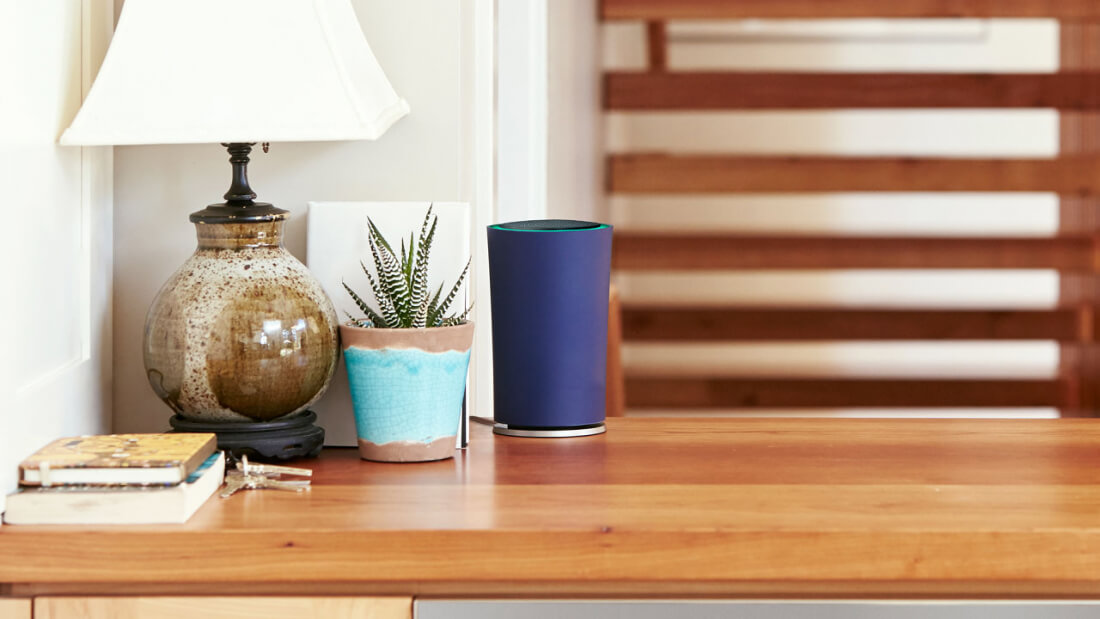In the early days of "smart homes" or "connected homes" or the "smart living room" or whatever phrase you chose to describe the idea of a living space with more than just a simple internet connection for your PC, there was a lot of talk about home gateways.
The theory was this magical box---the home gateway---was going to be not just the central point of connection for lots of different devices, but also the key to accessing services and many other revenue-generating products.
Instead, we ended up with a bunch of standalone WiFi routers. Now, there's nothing wrong with WiFi routers and---in reality---you can actually do a lot of the things that were promised for home gateways with a simple router. Connect all your devices? Check. Access TV services, telephony services, etc? Check. It's just that, well, it really didn't live up to the hype of the home gateway concept.
Since then, we've seen WiFi routers integrated into cable modems and other boxes that service providers such as telcos, cable companies, and satellite TV providers include as part of their packages. The basic idea behind these combo boxes was/is to reduce the number of nondescript blinking boxes our homes and apartments were/are becoming overrun with. Of course if, like me, you find you want to piece together better internet service from one provider with better TV service from another, you end up with multiple boxes anyway (and the need to actually turn the WiFi off on one of them to avoid network congestion and other hassles---but I digress).
To be fair, some of these combo boxes actually come close to the original promise of home gateways---including access to premium TV content and other services---but the world of over-the-top (OTT) delivery of video services from companies like Hulu, Netflix, etc., have changed the landscape and put into question the original need for a home gateway.
At the same time, we've seen some big improvements in the quality of WiFi routers, adding support for new technologies like 802.11ac and 802.11ad that offer higher sustained throughput, multiple antennas, and MIMO (multi-input, multi-output), the ability to handle more devices, and so on.
So, the question now becomes, are we seeing the end of home gateways?
While it might be easy to answer yes, I actually think the answer is no. What I think we are seeing is the evolution of home gateways into smarter, more broadly connected devices.
Traditional gateways and routers have frankly been nothing more than connection points. That's why they never engendered a great deal of enthusiasm among consumers. You find out the name of the network and the password, you enter it into all your devices, and you're good to go. Whether it was PCs, tablets, smartphones or even some connected appliances, all you seemed to need was a WiFi network for simple, utilitarian connection tasks.
But as great as WiFi is, it's not the best connection technology for everything, particularly low-power applications. If I want to have access to a smart light bulb from Cree, for example, options like Zigbee are a better (and cheaper) option. Other smart home devices use ZWave and/or some variation of Bluetooth.
While the original vision of what home gateways were supposed to be never really came to pass, we are starting to see an interesting evolution of the concept that could start to serve as the true central connecting point for all the connected devices in a home.
As a result, traditional home routers/gateways are starting to incorporate a wider range of radios and, along the way, more intelligence. From home automation-inspired boxes like the Wink hub, Insteon hub or SmartThings hub, to super-charged versions of home routers, like the Qualcomm-powered Google OnHub, we're seeing a real evolution (and widening) of the types of equipment that can now connect to these devices (which everyone seems to be calling hubs). Plus, with support for technologies like multi-user MIMO (MU-MIMO), which Qualcomm's MU EFX chip enables and which allows more efficient (i.e., faster) speeds with multiple WiFi devices, these new gateways are getting smarter about working with our existing devices.
In addition to more connectivity options, these gateways are getting sophisticated enough they require apps to properly configure them. But unlike the often-confusing IP address connectivity requirements of traditional routers, these new home gateways offers simple smartphone-based apps that make the process of using them much easier.
We're also just beginning to see the rise of new types of devices that could soon incorporate more of these gateway-type functions. For example, Apple's widely anticipated new Apple TV box is expected to incorporate a range of connectivity options and serve as the company's hub for its HomeKit home automation developments. In addition, future iterations of living room challengers, such as nVidia's Shield Android TV, are also likely to incorporate more home gateway style capabilities.
The bottom line is that, while the original vision of what home gateways were supposed to be never really came to pass, we are starting to see an interesting evolution of the concept that could start to serve as the true central connecting point for all the connected devices in a home. Ultimately, that's what a gateway should be all about.
Bob O'Donnell is the founder and chief analyst of TECHnalysis Research, LLC a technology consulting and market research firm. You can follow him on Twitter @bobodtech. This article was originally published on Tech.pinions.
